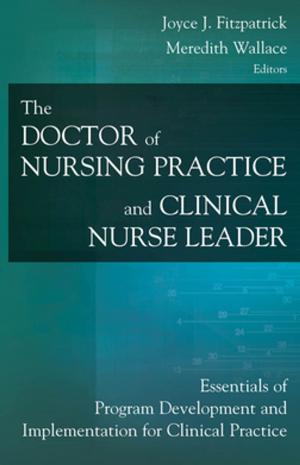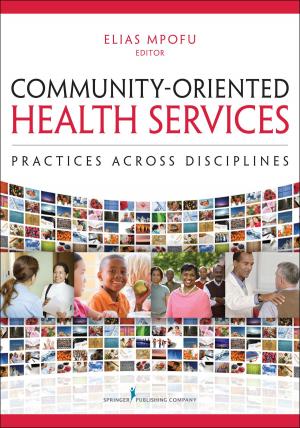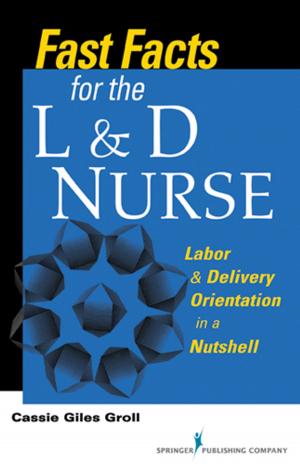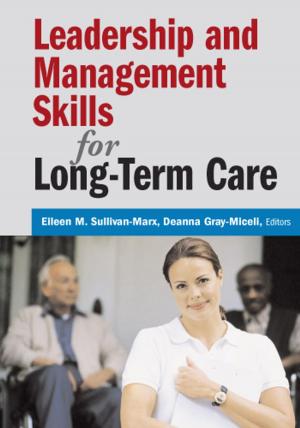Compact Clinical Guide to Cancer Pain Management
An Evidence-Based Approach for Nurses
Nonfiction, Health & Well Being, Medical, Nursing, Oncology & Cancer| Author: | Pamela Davies, MS, ARNP, Yvonne D'Arcy, MS, CRNP, CNS | ISBN: | 9780826109743 |
| Publisher: | Springer Publishing Company | Publication: | September 26, 2012 |
| Imprint: | Springer Publishing Company | Language: | English |
| Author: | Pamela Davies, MS, ARNP, Yvonne D'Arcy, MS, CRNP, CNS |
| ISBN: | 9780826109743 |
| Publisher: | Springer Publishing Company |
| Publication: | September 26, 2012 |
| Imprint: | Springer Publishing Company |
| Language: | English |
Awarded second place in the 2013 AJN Book of the Year Awards in the Palliative Care and Hospice category
"This book provides many options for pain management in cancer patients, including pharmacological and nonpharmacological options,...[and] is well organized and easy to navigate." Score: 92, 4 Stars.--Doody's Medical Reviews
"Overall, [this book] is a comprehensive and wide-ranging text that, as proclaimed on the cover, is evidence-based and fully referenced. Practitioners and students alike will find it useful, and it deserves a place on the library shelf where people from a wide range of backgrounds can gain access."--International Journal of Palliative Nursing
ì[This] text is full of ëclinical pearlsí based on [the authorsí] extensive clinical experience with effective and ineffective pain management interventionsÖThe scope of the content in this text is extremely comprehensiveÖnewer content on the effect of opioid polymorphisms, cancer pain emergencies, myofascial pain, and chronic pain in cancer survivors places this text at the forefront in terms of cutting-edge issues in cancer pain management.î
Christine Miaskowski, RN, PhD, FAAN
Professor and Associate Dean for Academic Affairs
American Cancer Society Clinical Research Professor
Sharon A. Lamb Endowed Chair in Symptom Management Research
Department of Physiological Nursing
University of California, San Francisco, CA
From the Foreword
Although the prevalence of uncontrolled cancer pain remains unnecessarily high, research has indicated that 90% of cancer patients with pain can be successfully treated with standard therapies. This concise yet extremely comprehensive guide to managing cancer pain will enable nurses on the front lines of pain assessment and management to incorporate effective strategies into their daily practice. It offers quick access to current evidence-based guidelines for busy nurses and nurse practitioners working in all oncology care settings. To facilitate quick information retrieval, the text is designed in a consistently organized, bulleted format with highlighted key information and tools for assessment and standardized treatment. It also serves as an important review for the ONS and HPNA certification exam.
This book focuses on all aspects of cancer pain, including assessment and screening tools, pharmacologic and nonpharmacologic treatment options, current national guidelines for pain management, regional anesthesia techniques, patient-controlled anesthesia, and epidural pain management. It also includes updated information on the effect of opioid polymorphisms, cancer pain emergencies, myofascial pain, and chronic pain in cancer survivors. The book covers palliative care and end-of-life pain management, especially for patients who have symptoms that are not managed. Information on chronic pain conditions such as neuropathic pain in cancer and the use of adjuvant medications for pain control are included, along with special treatment options for addiction and substance abuse in the cancer population. The text additionally provides information on managing pain with difficult-to-treat populations.
Key Features:
- Provides current, evidence-based information on all aspects of cancer pain management
- Includes important new guidelines on using a combination of pain management scales for optimal pain assessment and management
- Describes interventional techniques for managing severe pain situations
- Organized for speedy information retrieval
Awarded second place in the 2013 AJN Book of the Year Awards in the Palliative Care and Hospice category
"This book provides many options for pain management in cancer patients, including pharmacological and nonpharmacological options,...[and] is well organized and easy to navigate." Score: 92, 4 Stars.--Doody's Medical Reviews
"Overall, [this book] is a comprehensive and wide-ranging text that, as proclaimed on the cover, is evidence-based and fully referenced. Practitioners and students alike will find it useful, and it deserves a place on the library shelf where people from a wide range of backgrounds can gain access."--International Journal of Palliative Nursing
ì[This] text is full of ëclinical pearlsí based on [the authorsí] extensive clinical experience with effective and ineffective pain management interventionsÖThe scope of the content in this text is extremely comprehensiveÖnewer content on the effect of opioid polymorphisms, cancer pain emergencies, myofascial pain, and chronic pain in cancer survivors places this text at the forefront in terms of cutting-edge issues in cancer pain management.î
Christine Miaskowski, RN, PhD, FAAN
Professor and Associate Dean for Academic Affairs
American Cancer Society Clinical Research Professor
Sharon A. Lamb Endowed Chair in Symptom Management Research
Department of Physiological Nursing
University of California, San Francisco, CA
From the Foreword
Although the prevalence of uncontrolled cancer pain remains unnecessarily high, research has indicated that 90% of cancer patients with pain can be successfully treated with standard therapies. This concise yet extremely comprehensive guide to managing cancer pain will enable nurses on the front lines of pain assessment and management to incorporate effective strategies into their daily practice. It offers quick access to current evidence-based guidelines for busy nurses and nurse practitioners working in all oncology care settings. To facilitate quick information retrieval, the text is designed in a consistently organized, bulleted format with highlighted key information and tools for assessment and standardized treatment. It also serves as an important review for the ONS and HPNA certification exam.
This book focuses on all aspects of cancer pain, including assessment and screening tools, pharmacologic and nonpharmacologic treatment options, current national guidelines for pain management, regional anesthesia techniques, patient-controlled anesthesia, and epidural pain management. It also includes updated information on the effect of opioid polymorphisms, cancer pain emergencies, myofascial pain, and chronic pain in cancer survivors. The book covers palliative care and end-of-life pain management, especially for patients who have symptoms that are not managed. Information on chronic pain conditions such as neuropathic pain in cancer and the use of adjuvant medications for pain control are included, along with special treatment options for addiction and substance abuse in the cancer population. The text additionally provides information on managing pain with difficult-to-treat populations.
Key Features:
- Provides current, evidence-based information on all aspects of cancer pain management
- Includes important new guidelines on using a combination of pain management scales for optimal pain assessment and management
- Describes interventional techniques for managing severe pain situations
- Organized for speedy information retrieval















